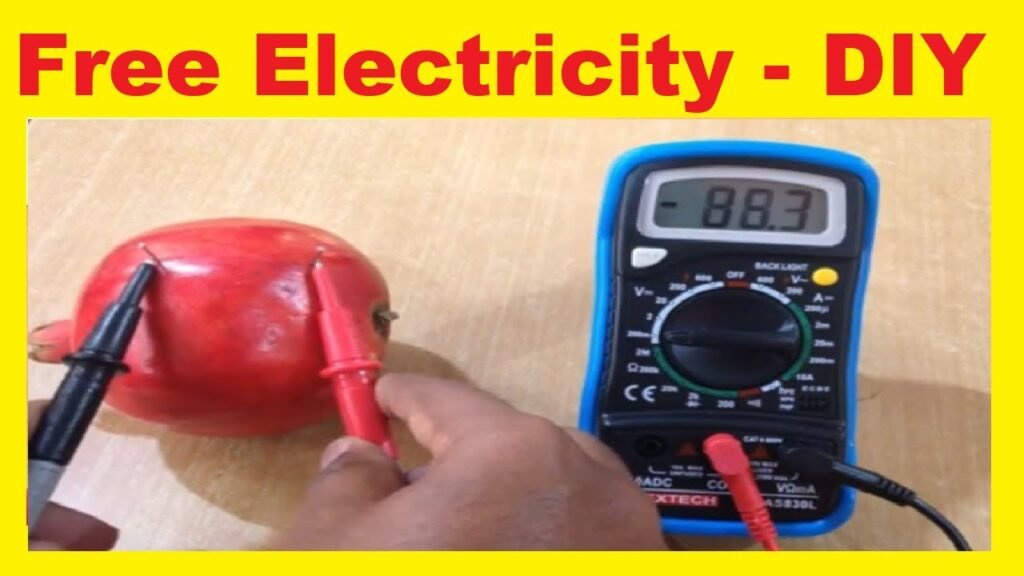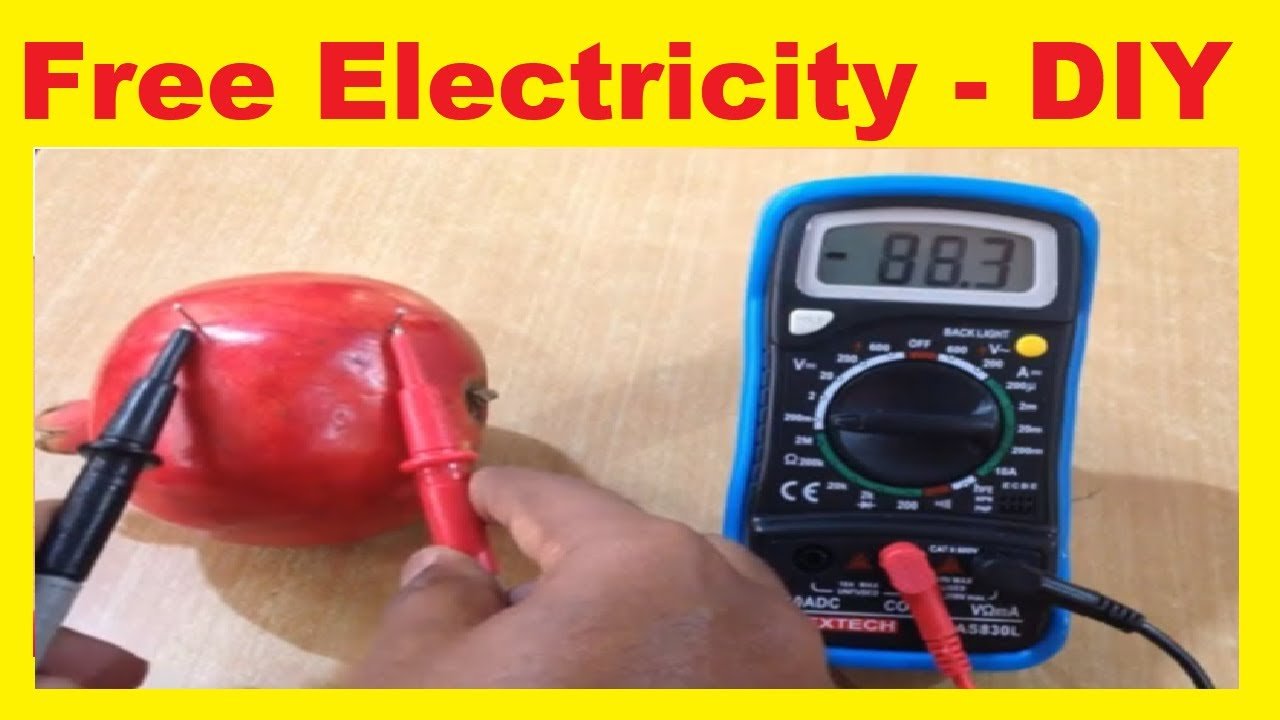Generating electricity from vegetables and fruits is an intriguing concept but generally not practical for producing usable amounts of electricity for daily use.

However, there are some educational experiments and demonstrations that involve harnessing small amounts of electrical energy from fruits and vegetables using basic principles of electrochemistry.
Here are a few concepts you might explore:
Lemon Battery Experiment
- Materials Needed:
- Lemons (or other acidic fruits like potatoes or oranges)
- Galvanized nails (zinc-coated)
- Copper wire
- Multimeter (to measure voltage and current)
- LED (optional, for demonstration)
- Procedure:
- Insert a galvanized nail and a piece of copper wire into the lemon (or fruit/vegetable).
- Connect the copper wire to the positive terminal and the nail to the negative terminal of the multimeter.
- Measure the voltage produced by the fruit battery. Typically, it ranges from 0.5V to 1V per fruit.
- Optionally, connect an LED to the terminals to demonstrate how the fruit battery can power a small device.
- Explanation:
- The lemon (or other fruits/vegetables) acts as an electrolyte, allowing ions to flow between the two electrodes (copper and zinc). This flow generates a small electric current due to the chemical reactions occurring at the electrodes.
Potato Battery Experiment
- Materials Needed:
- Potatoes (or other starchy vegetables)
- Zinc-coated nails
- Copper wire
- Multimeter
- LED (optional)
- Procedure:
- Insert zinc-coated nails and copper wires into the potatoes, ensuring they don’t touch each other inside the potato.
- Connect the copper wire to the positive terminal and the nail to the negative terminal of the multimeter.
- Measure the voltage produced by the potato battery. It typically produces around 0.5V to 1V per potato.
- Experiment with connecting LEDs or other small devices to demonstrate the power generated.
- Explanation:
- Similar to the lemon battery, the potato battery utilizes the potato as an electrolyte. The zinc-coated nail acts as the negative electrode (anode), while the copper wire acts as the positive electrode (cathode). When these electrodes are connected, a chemical reaction occurs that generates a small electrical current.
In summary, while generating electricity from vegetables and fruits can be a fun and educational experiment, it remains primarily a demonstration of basic principles rather than a practical source of free electricity for daily use.

